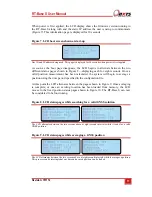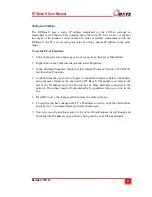
6
Oxford Technical Solutions
area. This is normally achieved using radio modems or via an optional Wi-Fi system. A
transmitter connected to the base station broadcasts corrections, and each GNSS
receiver has a modem attached to it that listens for those corrections.
For RTK (Real-Time Kinematic) carrier-phase measurements the principle is the same,
but the remote GNSS receiver also has to figure out the difference in the number of
carrier-phase cycles between the RT-Base S and the itself. To do this, the RT-Base S
measures the carrier-phase of the signals from each satellite and transmits it to the
remote system.
Figure 1. Differential GNSS overview
The base station is either placed at a precisely known location or left to average its position over time. It
can then estimate the errors affecting each satellite it is tracking and broadcast information about those
errors using radio modems. Nearby GNSS receivers use radio modems to listen for corrections, and
apply them to the signals from the common satellites, reducing the errors in their own position
calculations.
Differential GNSS can work in real-time applications because the errors affecting each
satellite vary slowly and predictably. The GNSS receiver in the vehicle uses a model to
predict the error from each satellite. It can update its model when the radio link
transmits new data. It is not necessary for the mobile GNSS receiver to wait until the
radio has transmitted the correction before outputting its latest value. Depending on the
GNSS receiver in your INS, pseudo-range differential GNSS corrections can be up to
60 seconds old, and RTK corrections can be up to 30 seconds old.





















